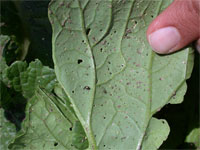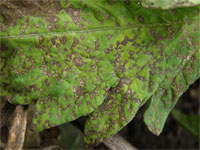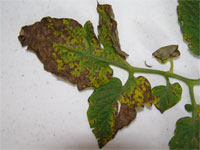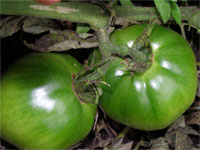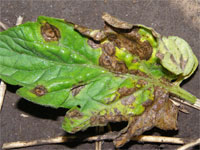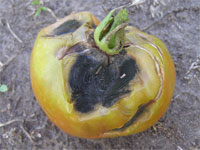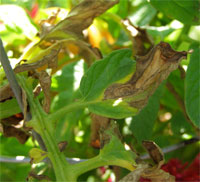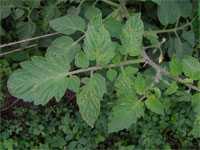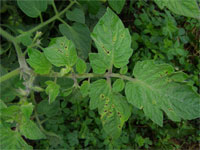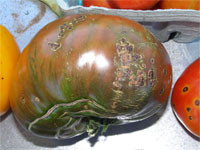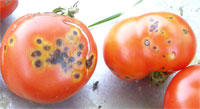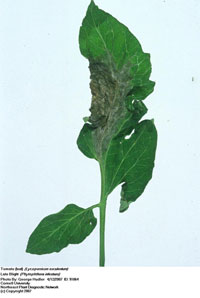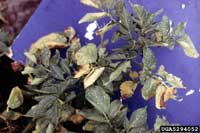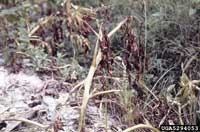Extension > Garden > Diagnose a problem > What's wrong with my plant? > Vegetable > Tomato > Spots on leaves
Tomato > Leaves > Spots on leaves
1 of 7
Flea Beetles
- Damage occurs during spring
- Small BB-sized pits or holes are chewed into leaves
- 1/16th inch beetles
- Small black beetles can jump
- More information on flea beetles
2 of 7
Septoria Leaf Spot
Septoria lycopersici
- Infects leaves, stems, petioles and sepals
- Small leaf spots (less than 1/8 inch in diameter)
- Spots have dark edge, with a tan or grey center
- Black dots appear in center of spot 8 days after spot first appears
- Most common with high humidity and temperatures 68° to 77° F
- More information on Septoria Leaf Spot
3 of 7
Early Blight
Alternaria solani
- Infects leaves, stems and fruit
- Black leathery spots on fruit start on stem end
- Dark irregular leaf spots, often surrounded by yellow tissue
- Sunken dark round stem lesion with concentric circles inside
- Occurs in warm wet weather, common at the end of summer
- More information on Early Blight
4 of 7
Bacterial Speck
Pseudomonas syringae pv. tomato
- Leaves have small (2 mm) black spots surrounded by yellow or light green halo
- Green and red fruit have small black spots (1 to 2 mm)
*Best way to distinguish from bacterial spot - Occurs in cool wet weather 64° to 75° F
- Difficult to see bacterial streaming
- More information on Bacterial Speck
5 of 7
Bacterial Spot
Xanthomonas campestris pv. vesicatoria
- Leaves have small (1 mm) black spots surrounded by yellow or light green halo
- Green and red fruit have large corky black spots (4 to 5 mm)
*Best way to distinguish from bacterial speck - Fruit spots may have a white greasy looking halo
- Occurs in warm wet weather 75° to 86° F
- Difficult to see bacterial streaming
- More information on Bacterial Spot
6 of 7
Late Blight
Phytophthora infestans
- Irregular water-soaked lesions on leaves, turn olive then brown
- Leaves, stems and petioles turn brown and shrivel
- Fruit spot is round olive colored, can cover whole fruit
- Infected tissue is covered with white mycelia is wet weather
- Disease spreads very rapidly in cool wet weather
- More information on Late Blight
7 of 7
Verticillium Wilt
Verticillium albo-atrum, Verticillium dahlia
- A yellow wedge shaped lesion on leaf often with a brown center
- Leaves yellow and wilt, often one side only
- Lower leaves wilt first, eventually whole plant wilts
- In a lengthwise cut of the stem near the soil line, veins are tan, center is green
- Common in cool temperatures 68° to 75° F
- More information on Verticillium Wilt



